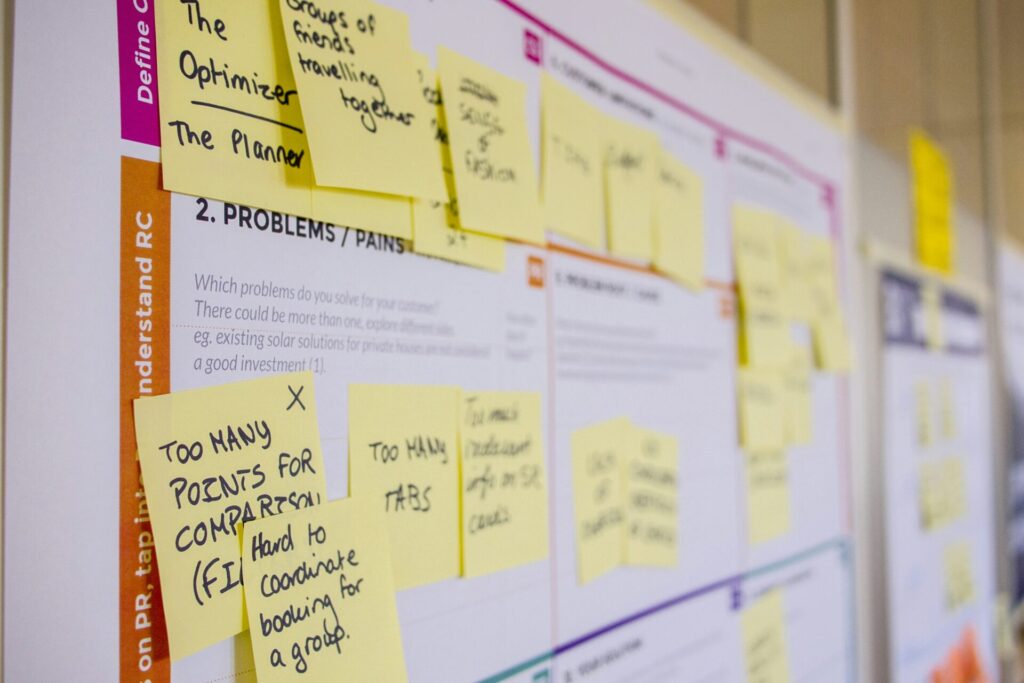Writing a research paper might feel intimidating at first, but breaking it down into clear, manageable steps makes it totally doable. Whether it’s a high school research essay or a college-level project, mastering the process will help you communicate your ideas effectively and contribute meaningfully to your field.
This guide will teach you how to write a research paper step-by-step—from choosing a topic to polishing your final draft—with practical tips to make your work organised, clear, and compelling.
Step-by-Step Instructions on How to Write a Research Paper
1. Start Your Research Paper: Choose and Narrow Your Topic
The first step when learning how to write a research paper is to pick a topic that interests you and fits your assignment. If your topic is too broad, narrow it to a specific angle or question that you can explore in depth.
Use focused phrases like “impact of,” “effects of,” or “comparison between” to refine your topic.
For example: Instead of “Social media,” try “The impact of social media on teenage mental health.”
Selecting a specific focus will guide your research and writing, helping you avoid getting overwhelmed.
Stuck deciding on a topic? Explore 100 ideas for research projects.
2. Conduct Preliminary Research and Formulate a Thesis Statement
With your topic set, start gathering information from credible sources like academic journals, books, and reputable websites. Keep notes and track sources carefully for proper referencing later.
Use your research to craft a clear thesis statement—the main argument or purpose of your paper. A strong thesis gives your writing focus and direction.
Example thesis:
“Regular exercise improves cognitive function and reduces anxiety in college students.”
3. Create an Outline for Your Paper
Before writing, organise your ideas using an outline. This roadmap helps structure your arguments logically.
Your outline typically includes:
- Introduction: Context, background, and thesis statement.
- Body paragraphs: Each covering a key point supported with evidence.
- Conclusion: Summarises key findings and their significance.
Draft your main points and sub-points under these sections to keep your writing focused.
4. Write the Introduction
Start your paper with an engaging introduction.
- Begin with a hook—an intriguing fact, question, or brief story related to your topic.
- Provide context by explaining key terms and why the topic matters.
- End with your thesis statement to guide readers on what to expect.
5. Develop the Body Sections
Each body paragraph should focus on one central idea that supports your thesis.
- Start with a clear topic sentence for the paragraph.
- Present evidence such as data, quotes, or examples from your research.
- Analyse the evidence, explaining how it supports your argument.
- Use transitions to smoothly lead readers to the next point.
For longer papers, consider adding headings to organise content and help readability.
6. Write the Methodology Section (If Applicable)
If your research includes experiments, surveys, or data collection, describe your methods here.
- Explain how you gathered data and why your approach was appropriate.
- Include details of procedures, tools, and participants.
This section adds transparency and lets readers evaluate your study’s reliability.
7. Present Your Results
Summarise your findings clearly, often using tables, charts, or graphs for clarity.
- Stick to factual reporting without interpretation.
- Highlight key observations.
8. Discuss the Results
Now interpret your data.
- Explain what your findings mean in relation to your thesis and prior research.
- Discuss unexpected results or limitations of your study.
- Suggest areas for further research if relevant.
9. Write the Conclusion
Summarise your paper by:
- Restating your thesis in the light of your findings.
- Briefly recapping your main points.
- Explaining the broader importance of your research.
Avoid introducing new information here.
10. Add References and Citations
Use the required citation style (APA, MLA, Chicago, etc.) to list every source you referenced.
- Cite every paraphrase, quote, or data point properly.
- Accurate citations prevent plagiarism and improve credibility.
11. Proofread and Edit
Never submit your first draft. Review your paper carefully for:
- Clarity, flow, and logical progression
- Grammar, punctuation, and spelling errors
- Consistency in formatting and citation style
- Whether your arguments fully support your thesis
Reading your paper aloud or asking a peer to review it helps catch mistakes you might miss.
What’s next? Sending your hard work out into the world – so it can start to change the world! Learn how to publish a research paper.
Additional Tips for Writing a Good Research Paper
- Start early: Research and writing take time – plan ahead.
- Use credible, academic sources: Avoid unsourced or biased information.
- Stay organised: Keep detailed notes and clear records of citations.
- Use an abstract: Make a great first impression with a clear and concise abstract.
- Write simply and clearly: Aim for concise language rather than complicated vocabulary.
- Link every paragraph back to your thesis: Maintain focus throughout your paper.
- Include visuals when helpful: Use charts and graphs, but always explain them.
- Follow all assignment or publisher guidelines: Formatting, length, and style matter.
- Revise more than once: Multiple drafting improves clarity and polish.
- Get feedback: Tutors, classmates, or writing centres are great resources.
Why Writing Research Papers with Immerse Matters
Writing a research paper with Immerse Education can elevate your work and academic profile significantly. Our Online Research Programme (ORP) offers personalised support from expert Oxbridge and Ivy League tutors, guiding you to produce university-level research papers.
Benefits of completing the ORP include:
- Developing advanced research, critical thinking, and academic writing skills.
- Gaining exposure to high-level research methodologies and expertise.
- Receiving personal feedback to refine your work to university standards.
- Earning UCAS points and college credits that strengthen your university application (if completing an Accredited ORP).
- Joining a supportive network of motivated students and prestigious tutors.
By choosing to write your research paper with Immerse, you not only improve your research and writing skills but also get tangible evidence of your dedication and capability for higher education.
Join the Immerse Education 2025 Essay Competition
Follow the instructions to write and submit your best essay for a chance to be awarded a 100% scholarship.

Conclusion
Learning how to write a research paper well is an essential academic skill that will benefit you throughout your education and beyond. By following a structured process – from choosing a narrowed topic, researching and outlining clearly, to writing and revising thoughtfully – you can create a research paper that is coherent, persuasive, and impactful.
Taking advantage of programs like the Immerse Education Online Research Programme can give you that extra edge and confidence to produce high-quality work, earn credits, and stand out during university admissions.
FAQ
What is a research paper?
An academic document presenting your findings, analysis, and insights on a specific question or topic.
How do I start a research paper?
Pick a focused topic, conduct preliminary research, and develop a thesis statement.
What are the main sections of a research paper?
Introduction, Methodology (if applicable), Body, Results, Discussion, Conclusion, and References.
How can I improve my research paper?
Plan carefully, use credible sources, write clearly, cite properly, and revise multiple times.
Can I earn college credits by writing a research paper with Immerse?
Yes! Completing a research paper with Immerse’s Online Research Programme can earn you UCAS points and college credits.

























